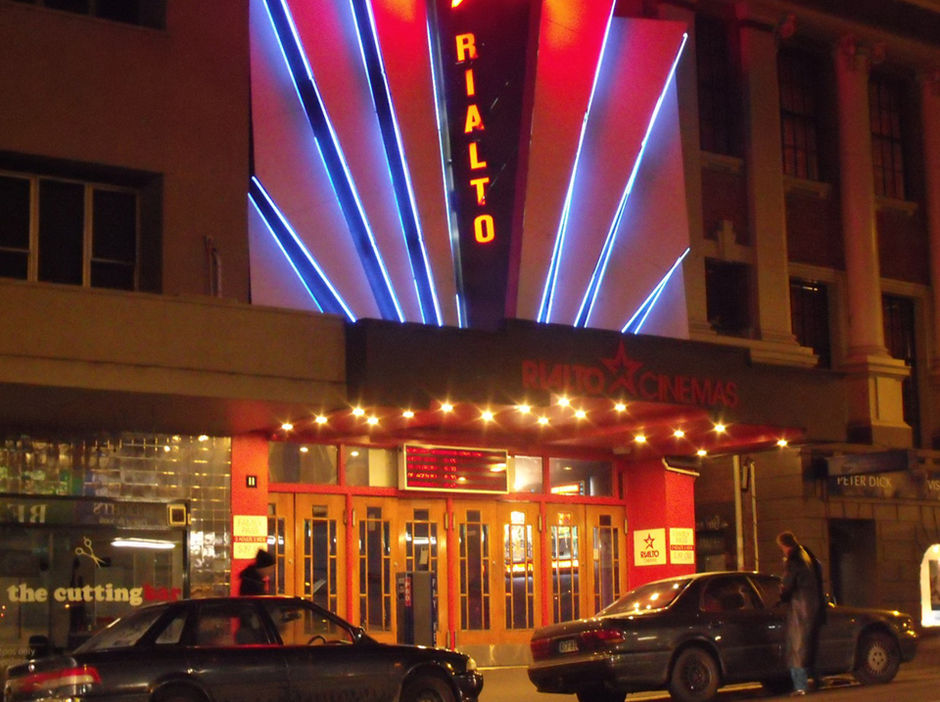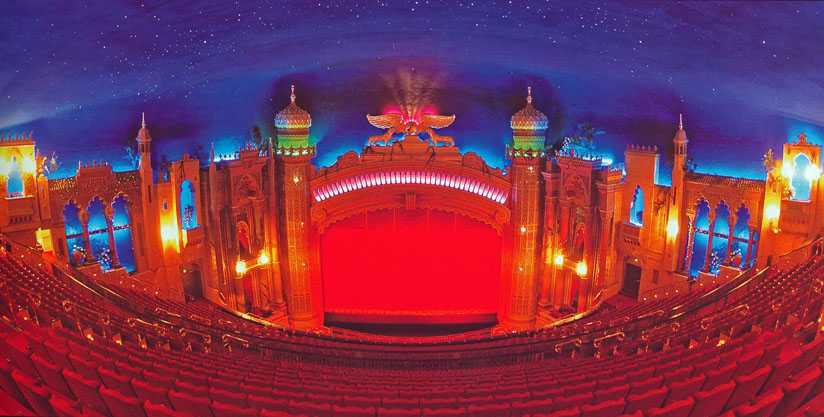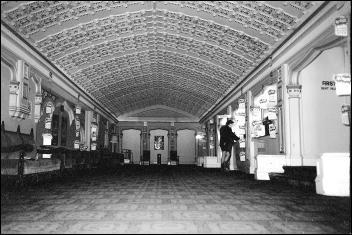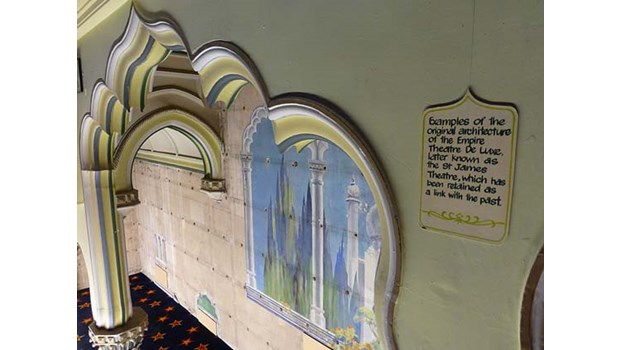In the first few decades of the 20th century, after 50 years of back breaking land development ,the young colony of New Zealand was finding its feet and building basic settlements into more permanent towns. The hard working population began to demand more comfort at a time when the cinema was becoming a major entertainment for the average person. In America, the uncomfortable, tatty little nickelodeons were unable to cope with the increasing audience numbers.
Although the world’s first full length feature film was made in 1906, it wasn’t until the resounding success of D.W. Griffith’s epic, Birth of a Nation in 1915, that the feature film had truly arrived for American audiences. Prior to this, films were short “one or two reelers” with basic storylines at best. Now that a real story could be told in a movie, unprecedented possibilities for mass entertainment could be developed.
In the early 1920s, savvy businessmen saw the potential in this new screen entertainment and soon the first picture palace opened. It didn’t take long for many of the larger American cities to built huge auditoriums lavishly done out in themes to impress all who entered them. There were three types of picture palaces, the classic design, the art deco and the atmospheric which featured ceilings resembling a starlit sky.
 The Palace Los Angeles(losangenestheatre.com)
The Palace Los Angeles(losangenestheatre.com)
Kiwi audiences took to American feature films with the same enthusiasm and in the 1920s, atmospheric picture palaces appeared in Auckland and Dunedin.
EMPIRE/ST.JAMES THEATRE DUNEDIN
The 2,000-seat Empire Theatre opened in Dunedin in 1916. It was re-modelled in 1928 in the Moorish Atmospheric style with minarets, and a Taj Mahal-like proscenium. Stars twinkled on the dark blue ceiling giving the audience the impression of sitting outside. It underwent renovations in1952 and was re-named the St. James Theatre. Part of the decoration was preserved along with the upper Moorish style lobby which was maintained as a bar. Sadly, much of the Atmospheric style detail was covered over or removed in the 1950s when the ornate plaster proscenium was hidden behind a huge 70mm screen.
As a teenager, I spent a lot of time at the St. James Theatre. I liked to sit upstairs and I was always filled with a sense of excitement when the auditorium lights dimmed and the overture to the movie started. It was at this time the twinkling lights in the “night Sky” had an impact. Although the 70mm screen was positioned in front of the original proscenium, much of it was still visible. The Moorish style columns lined the sides of the theatre making the St. James special amongst the 7 cinemas Dunedin had at that time. The large confectionery counter extended the length of the upstairs area and was also beautifully decorated. I vividly remember the crush of patrons eager to grab an ice cream as the bell chimed indicating the movie was about to start. This part of the theatre remains today as a somewhat forlorn survivor of the cinema’s glory days.
The St. James Theatre was closed in 1993 and the Preservation Trust ran the tired place as a restaurant and nightclub until 1998. Movies increased in popularity about this time so the vast interior of the old St. James was sectioned into small auditoriums and reopened as the Rialto Cinema showing movies on six screens.
The conversion to a multiplex was unsympathetic to the original design and odd pieces have been kept for some strange reason as to my mind, it only makes the whole place look a bit of a mess. However, we must be thankful that the Empire Theatre, built at the opening of last century, continues to show movies to the citizens of Dunedin.
 St. James as the Rialto Cinemas Today
St. James as the Rialto Cinemas Today
CIVIC THEATRE AUCKLAND
Unlike Dunedin’s much altered “Picture Palace”, Auckland’s Civic Theatre has managed to survive intact. Although the building is pretty ugly on the outside, inside, it is a gem and is one of only 7 atmospheric theatres left in the world and is the largest theatre of its type in Australasia. The outlandish 1929 decor is admired for its twisted columns and seated Buddhas that grace the Indian inspired foyer. The main auditorium can seat 2,300 people making it the largest theatre in New Zealand. The auditorium features turrets, minarets, spires as well as several Abyssinian panther statues. Like the St. James, lights twinkle overhead to give the impression of sitting outside at night.
 Refurbished Civic Theatre Auditorium
Refurbished Civic Theatre Auditorium
RESTORATION
During the 1980s the Civic was little used and the huge building started to deteriorate and there was talk of demolition. I can remember walking past the building at this time and seeing holes forming where rotten masonry had crumbled away. It started to become an eyesore in the central city and it seemed only a matter of time before the wrecking ball would destroy it to make way for another high rise office tower. Fortunately a local film maker, Peter Wells started a campaign to save the old theatre. After a decade of slow restoration, the theatre was finally re-opened for business in almost the same condition it had enjoyed in its glorious heyday.
I have been to the Civic Theatre on a number of occasions and each time, the grandeur and over-the-top appearance of the original decor never fails to impress and amaze me. The Civic Theatre is now a city treasure and hosts the major international stage shows that frequently visit Auckland. It has also kept a projection system from its days as a cinema so movie festivals are also held in the grand old theatre.
INTIMATE CINEMA
With more young people watching movies on their devices, the future of standard screen cinemas is a bit shaky. As I see it, the multiplex will disappear. Only the huge IMAX screen will survive and more films will be screened this way. It will be a choice of either watching movies on a phone/tablet/laptop screen or the mega IMAX screen. However, at the present time, there are numerous intimate cinemas offering comfort in a small auditorium with a modest sized screen. I was fortunate to be involved with the design of a small cinema under the Dunedin Town Hall to screen my 35mm movie, Southern Adventure: Images of Otago throughout the day as a stand alone tourist attraction in the city. The auditorium was lined with red curtains which gave it a cosy feel with the sole focus being the screen. This simple interior design is, of course, the complete opposite to the gaudy, extravagant puffery that made picture palaces around the world, including the Civic and St. James, so popular in their day.
 Entrance to Metro Cinema Dunedin
Entrance to Metro Cinema Dunedin
Southern Adventure: Images of Otago played for 3 years. The cinema was then re-branded as the Metro and today, it screens art films, along with standard release titles. I feel confident in saying the grandeur of the picture palace will never return. We just have to be grateful for the few surviving theatres that allow us to see just how amazing these magnificent cinemas were.
Did you enjoy the blog?
Ceidrik Heward
Ceidrik Heward is an Amazon TOP SELLING AUTHOR and has lived and worked in 7 countries working as a TV cameraman, director and film tutor. For the past 17 years he has focused on writing and has been published in magazines and newspapers in Europe, USA, Asia and the Middle East.
His interests include photography, psychology and metaphysics. He loves to read and always has at least 3 books on the go. He has written 22 manuals/books and has just completed his 4th short novel. Ceidrik believes sharing information and stories is the best way to stimulate the imagination and enrich our lives.






















 Visit Today : 354
Visit Today : 354 Total Visit : 1133531
Total Visit : 1133531
interesting
Hi there to every body, it’s my first go to see of this weblog; this web
site includes amazing and really good material in support of visitors.